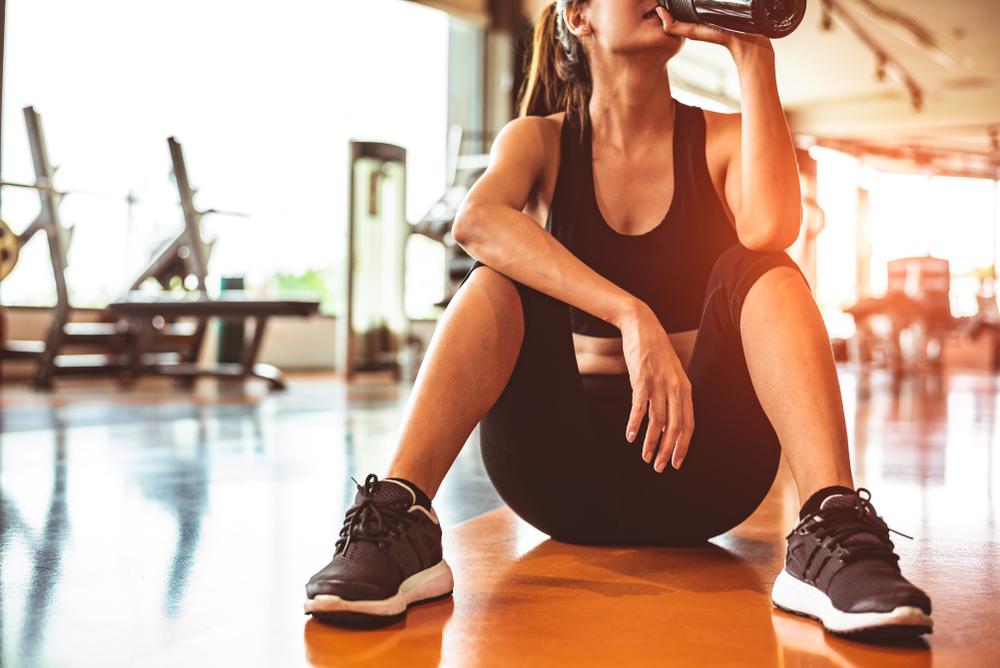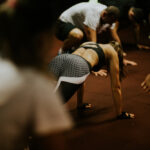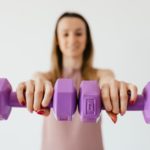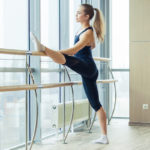Cool Down: Importance of Post-Workout Recovery in Summer

As summer approaches, many fitness enthusiasts are eager to elevate their workout routines. However, the warmer weather brings unique challenges, making post-workout recovery even more crucial. At Fitness CF, we understand that proper recovery is essential for preventing injuries, enhancing performance, and maintaining overall health, especially during the hotter months.
In this blog post, we’ll explore the importance of cooling down after your summer workouts. We’ll provide you with effective recovery strategies, including hydration tips, cooling techniques, and nutrition advice, to help your body recuperate efficiently. Embracing these practices will not only keep you safe and healthy but also ensure that you get the most out of your fitness efforts. Let’s dive into how you can stay cool and rejuvenate after those intense summer sessions.
The Physiology of Exercise and Heat
Exercise, irrespective of the season, induces various physiological changes in the body. Your heart rate elevates to pump more blood and oxygen to the muscles, your metabolism increases to meet the energy demands, and your body temperature rises due to the heat generated by active muscles. Typically, the body can manage these changes efficiently by dispersing excess heat through sweating and increased blood flow to the skin. However, summer’s high temperatures and humidity levels make this thermoregulation more challenging.
When you work out in the heat, your body must work even harder to cool itself. Sweat production increases significantly, but in humid conditions, sweat evaporates less efficiently, making cooling less effective. This can lead to a higher core body temperature, putting extra strain on your cardiovascular system and increasing the risk of heat-related illnesses. Understanding these physiological responses is crucial in recognizing why post-workout recovery in summer requires special attention.
Why Post-Workout Recovery is Crucial in Summer
1. Prevents Overheating
During summer workouts, your body’s cooling mechanisms are pushed to their limits. Sweating and increased blood flow to the skin help manage internal heat, but these processes can leave you vulnerable to dehydration and overheating. Proper recovery allows your body to gradually return to its normal temperature, helping to stabilize your heart rate and prevent conditions like heat exhaustion or heatstroke. A structured cool-down period, including light cardio and stretching, facilitates this gradual return to a resting state, promoting safer and more effective recovery.
2. Reduces Muscle Soreness
Muscle soreness, particularly delayed onset muscle soreness (DOMS), can be exacerbated by the heat. Intense exercise causes microscopic damage to muscle fibers, leading to inflammation and soreness. Heat can amplify this inflammation, making recovery even more uncomfortable. Cooling down effectively, including techniques like stretching and foam rolling, can help alleviate this soreness. These activities promote blood flow to the muscles, which aids in the removal of metabolic waste products like lactic acid, reducing inflammation and promoting faster recovery.
3. Replenishes Lost Fluids and Electrolytes
Summer workouts often result in significant fluid and electrolyte loss through sweat. This can lead to dehydration, which negatively impacts muscle function, endurance, and overall performance. Proper hydration during and after exercise is crucial to replenish these lost fluids and maintain electrolyte balance. Drinking water and electrolyte-rich beverages post-workout helps restore hydration levels, supports muscle function, and prevents cramping and fatigue.
4. Supports Muscle Repair and Growth
Recovery is the phase where muscles repair themselves and grow stronger. This process is particularly important after intense workouts that cause muscle microtears. Providing your body with the right nutrients post-exercise, especially protein, supports muscle protein synthesis, aiding in muscle repair and growth. In summer, ensuring adequate hydration and cooling down properly also helps reduce muscle inflammation, creating an optimal environment for recovery.
5. Improves Sleep Quality
Quality sleep is crucial for effective recovery as it is the time when most muscle repair and growth occur. Post-workout routines that include proper hydration, cooling down, and nutrition can positively impact your sleep quality. Staying hydrated helps regulate body temperature, which is essential for restful sleep, while nutrient-rich foods support the body’s recovery processes during sleep.
Effective Post-Workout Recovery Strategies
1. Hydration
Hydration is the cornerstone of post-workout recovery, especially in the heat of summer. Here’s how to manage it effectively:
- Water: Immediately after your workout, start replenishing lost fluids by drinking plenty of water. Aim to drink at least 16-24 ounces of water to kickstart rehydration.
- Electrolyte Drinks: In addition to water, consider consuming drinks that are rich in electrolytes, such as sports drinks or coconut water. These beverages help replenish essential minerals like sodium, potassium, and magnesium lost through sweat, which are critical for muscle function and overall hydration balance.
- Monitor Urine Color: A simple and effective way to gauge your hydration status is by monitoring the color of your urine. Ideally, it should be a pale yellow. Dark yellow urine indicates dehydration and the need to increase fluid intake.
2. Cool Down Exercises
Cooling down is essential to help your body transition from an active state to a resting state. Effective cool-down exercises include:
- Light Cardio: Engage in 5-10 minutes of light cardio, such as walking or a gentle jog. This helps gradually lower your heart rate and body temperature.
- Stretching: Perform static stretches targeting the major muscle groups you used during your workout. Hold each stretch for 15-30 seconds to improve flexibility and reduce muscle stiffness. Stretching aids in the reduction of muscle soreness by promoting better blood circulation and muscle relaxation.
- Foam Rolling: Incorporate foam rolling into your cool-down routine. This self-myofascial release technique helps alleviate muscle tightness, improves blood flow, and reduces the buildup of lactic acid, further aiding in muscle recovery.
3. Nutrition
Nutrition plays a pivotal role in post-workout recovery. Focus on the following:
- Protein: Consume protein-rich foods or protein shakes within 30-60 minutes after your workout to support muscle repair and growth. Aim for 20-30 grams of protein to provide your muscles with the essential amino acids they need for recovery.
- Carbohydrates: Replenish your glycogen stores by eating complex carbohydrates such as whole grains, fruits, and vegetables. These foods help restore energy levels and support overall recovery.
- Healthy Fats: Include healthy fats from sources like avocados, nuts, and olive oil in your post-workout meal. These fats support overall health and reduce inflammation.
- Antioxidants: Foods rich in antioxidants, such as berries, dark chocolate, and leafy green vegetables, help combat oxidative stress and inflammation caused by intense workouts. Incorporating these foods into your diet can enhance recovery and reduce muscle soreness.
Summer-Specific Recovery Tips
1. Timing Your Workouts
Schedule your workouts strategically to avoid the hottest parts of the day. Early morning or late evening workouts are ideal during summer as temperatures are cooler, reducing the risk of overheating and heat-related illnesses. If you must exercise during peak heat hours, opt for shaded areas or indoor facilities with air conditioning.
2. Wear Appropriate Clothing
Choose lightweight, moisture-wicking fabrics that allow sweat to evaporate quickly and keep you cool during your workouts. Loose-fitting, light-colored clothing reflects sunlight and helps regulate body temperature. Additionally, wearing a hat and sunglasses can provide protection from the sun’s rays and prevent overheating.
3. Indoor Workouts
On extremely hot days, consider moving your workouts indoors to a gym or fitness center with air conditioning. Indoor facilities offer a controlled environment where you can maintain your fitness routine without the added stress of extreme heat. Take advantage of the variety of equipment and classes available to keep your workouts challenging and enjoyable.
4. Stay in the Shade
If you prefer outdoor workouts, seek shaded areas or trails that offer protection from direct sunlight. Exercising in shaded areas can help reduce your exposure to heat and lower the risk of dehydration and heat-related illnesses. Additionally, wearing sunscreen with a high SPF and reapplying it regularly can protect your skin from harmful UV rays.
5. Monitor Weather Conditions
Pay attention to weather forecasts and heat advisories before heading out for your workout. Avoid strenuous activities during heatwaves or when humidity levels are high, as these conditions can increase the risk of heat exhaustion or heatstroke. If outdoor conditions are unfavorable, consider modifying your workout or moving it indoors to ensure your safety.
Addressing Common Concerns About Summer Workouts
1. Is It Safe to Work Out in the Heat?
Exercising in the heat can be safe if you take appropriate precautions. Stay hydrated, wear breathable clothing, and avoid exercising during the hottest part of the day. Listen to your body, and if you experience symptoms of heat exhaustion, such as dizziness, nausea, or weakness, stop exercising immediately and seek shade and hydration.
2. How Can I Stay Motivated to Work Out in the Summer?
Staying motivated during the summer months can be challenging, but there are strategies to keep you on track. Set specific goals, find a workout buddy or group, and vary your routine to keep things interesting. Additionally, focus on the benefits of exercise, such as improved mood, energy, and overall health, to stay motivated and committed to your fitness goals.
3. What Are Signs of Heat Exhaustion or Heatstroke?
Heat exhaustion and heatstroke are serious heat-related illnesses that require immediate medical attention. Symptoms of heat exhaustion include heavy sweating, weakness, dizziness, nausea, headache, and muscle cramps. If left untreated, heat exhaustion can progress to heatstroke, which is a life-threatening condition characterized by a high body temperature, confusion, loss of consciousness, and seizures. If you or someone else experiences these symptoms, seek medical help immediately and move to a cooler environment.
The Role of Technology in Post-Workout Recovery
Modern technology can be a valuable tool in enhancing post-workout recovery, especially during the summer:
1. Fitness Trackers
Fitness trackers can monitor your heart rate, activity levels, and hydration status, providing valuable insights into your post-workout recovery. Use a fitness tracker to track your workouts, monitor your heart rate variability, and ensure you’re staying hydrated during hot weather.
2. Apps for Guided Cool Downs
There are numerous smartphone apps available that offer guided cool-down routines tailored to your specific workout and fitness level. These apps provide step-by-step instructions for stretching, foam rolling, and other recovery techniques to help you recover faster and reduce the risk of injury.
3. Smart Water Bottles
Smart water bottles equipped with hydration tracking technology can help you stay on top of your fluid intake throughout the day. These bottles monitor how much water you’re drinking and send reminders to drink more if you’re falling behind on your hydration goals. By staying adequately hydrated, you can support your body’s recovery processes and maintain optimal performance during your summer workouts.
Incorporating these summer-specific recovery tips and leveraging technology can help you stay safe, motivated, and on track with your fitness goals during the warmer months. By taking proactive steps to prioritize your post-workout recovery, you can enjoy a safe and rewarding summer fitness routine.
Conclusion
As the temperature rises, it’s essential to prioritize post-workout recovery to ensure safe and effective fitness routines. At Fitness CF, we recognize the importance of cooling down after summer workouts to prevent overheating, reduce muscle soreness, and support overall well-being.
By implementing summer-specific recovery strategies, such as timing workouts strategically, wearing appropriate clothing, and staying hydrated, you can optimize your recovery and maximize your results. Additionally, addressing common concerns about summer workouts, such as staying motivated and recognizing signs of heat-related illnesses, ensures that you can exercise safely and confidently. Leveraging technology, such as fitness trackers and hydration apps, can further enhance your recovery process and keep you on track with your fitness goals. With the right approach to post-workout recovery, you can stay cool, healthy, and energized throughout the summer months, achieving your fitness aspirations at Fitness CF.







